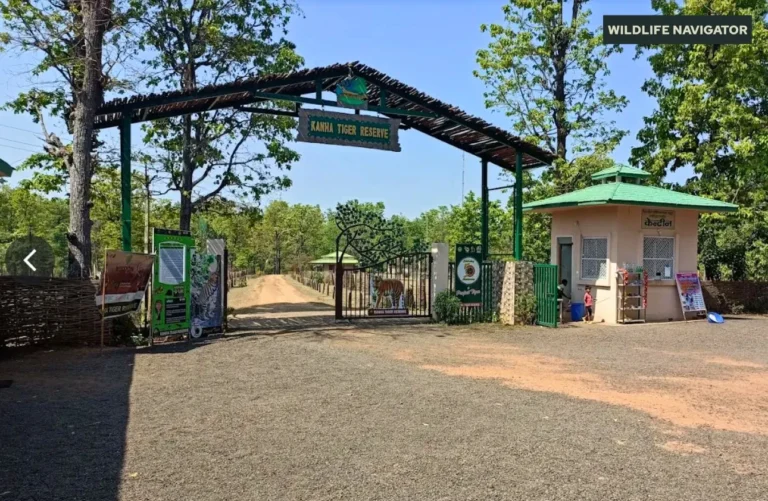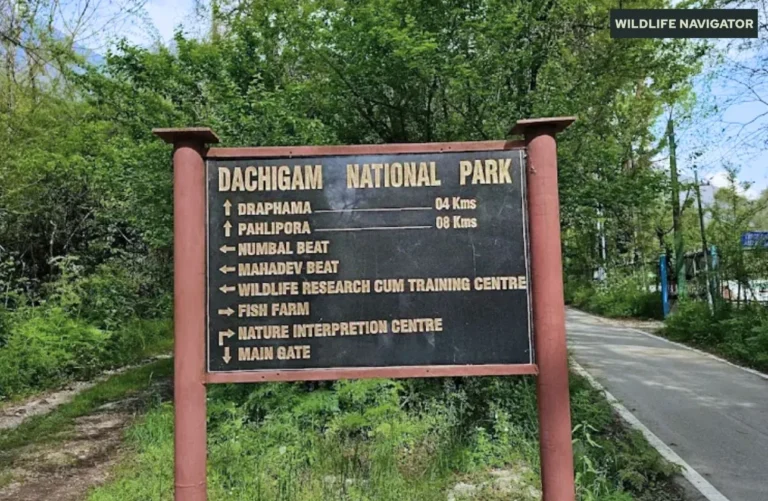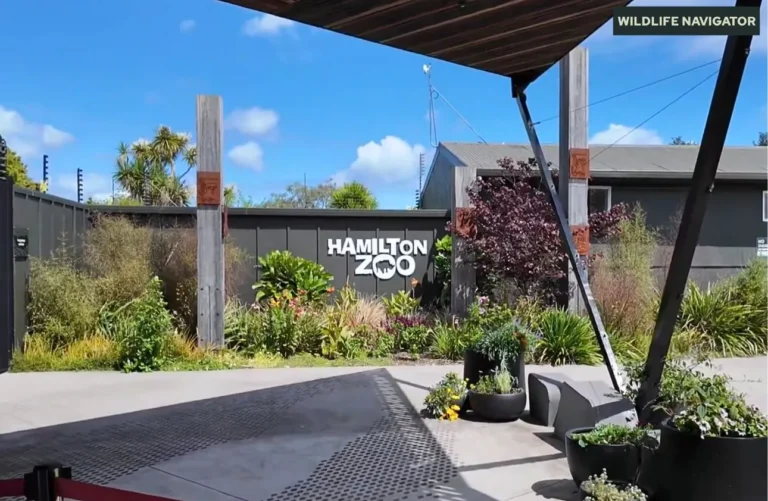Gorumara National Park – Flora, Fauna, Safari and More

Gorumara National Park is a hidden gem for wildlife enthusiasts and nature lovers in the lush Dooars region of West Bengal. Known for its wide-open grasslands, dense forests, and meandering rivers, the park offers a unique glimpse into the biodiversity of eastern India. Unlike the more famous national parks in the country, Gorumara is a serene retreat where the Indian one-horned rhinoceros roams freely alongside herds of elephants, gaurs, and deer.
The park’s strategic location in the Dooars—a corridor connecting the Himalayan foothills with the plains—makes it an important wildlife haven. It is ideal for both casual visitors and wildlife photographers, offering a perfect blend of scenic beauty, tranquillity, and rich biodiversity. Whether you’re hoping to spot a majestic rhino grazing in the grasslands or catch a glimpse of a hornbill perched on a tree, Gorumara promises an unforgettable experience in the heart of nature.
History and Establishment
Gorumara National Park has a fascinating history rooted in conservation and the protection of India’s iconic wildlife. The area was initially declared a wildlife sanctuary in 1949 to safeguard the declining population of the Indian one-horned rhinoceros, which had faced severe threats from poaching and habitat loss. Recognising its ecological significance and the need for stronger protection, the government officially upgraded it to National Park status in 1992.
Over the years, Gorumara has played a pivotal role in conserving not just rhinos but also elephants, deer, and other grassland and forest species. Its location in the Dooars, a region rich in biodiversity, allowed the park to serve as a critical wildlife corridor, connecting other protected areas like Chapramari Wildlife Sanctuary and Jaldapara National Park.
The park’s establishment marked a turning point for conservation efforts in West Bengal. Along with stringent anti-poaching measures, Gorumara has benefited from community engagement programs that encourage local participation in wildlife protection. Today, it stands as a symbol of successful conservation, blending human efforts with the untouched beauty of nature.
Geography and Landscape
Gorumara National Park spans approximately 80 square kilometres of diverse terrain in the Dooars region of northern West Bengal. The park’s landscape is a delightful mix of open grasslands, dense Sal forests, riverine vegetation, and scattered wetlands, making it a haven for a wide variety of flora and fauna.
The park is crisscrossed by rivers like the Murti and Jaldhaka, which not only sustain the wildlife but also add to the scenic beauty of the park. These water bodies attract elephants, deer, and rhinos, especially during the dry season when water becomes scarce elsewhere. The gentle rolling hills and patches of dense forest provide perfect shelter for wildlife and create opportunities for spotting animals in their natural habitat.
Gorumara’s geography also plays a critical role in its biodiversity. The combination of grasslands and forested areas supports species that prefer open plains, like rhinos and gaurs, as well as those that thrive under canopy cover, such as leopards and various bird species. The park’s tranquil landscape, dotted with small streams and ponds, offers photographers and nature enthusiasts an immersive wildlife experience amidst the serene beauty of the Dooars.
Flora and Fauna
Gorumara National Park is a treasure trove of biodiversity, offering a rich tapestry of plant and animal life. The park’s combination of grasslands, forests, and wetlands creates ideal habitats for a variety of species.
Flora in Gorumara National Park
The vegetation in Gorumara is diverse, ranging from dense forests to open grasslands:
- Sal forests: Dominant in the park, providing shelter and food for many herbivores.
- Grasslands: Open meadows where rhinos, elephants, and deer graze freely.
- Riverine vegetation: Along rivers and streams, supporting aquatic life and bird species.
- Shrubs and herbs: Found in the undergrowth, offering habitat for small mammals and insects.
Fauna in Gorumara National Park
Mammals:
- Indian one-horned rhinoceros: The star attraction of the park.
- Elephants: Often seen grazing in herds in the grasslands.
- Gaur (Indian bison): Found in forested regions.
- Deer species: Including sambar, barking deer, and hog deer.
- Predators: Leopards and small cats, though elusive.
Birds:
- Hornbills: Great hornbill and Indian grey hornbills frequent the forests.
- Kingfishers and sunbirds: Common near water bodies.
- Migratory birds: Visit during winter, adding vibrant colours to the landscape.
- Peafowl: Often spotted in open areas and near forest edges.
Reptiles and Amphibians:
- Monitor lizards, snakes, and turtles thrive in wetlands and forest floors.
The rich biodiversity of Gorumara makes it a paradise for wildlife enthusiasts and birdwatchers alike. Its well-preserved habitats allow visitors to witness animals in their natural surroundings, creating an authentic experience that combines education with adventure.
Popular Safaris and Activities
Gorumara National Park offers a range of activities that let visitors explore its wildlife and natural beauty up close. From thrilling safaris to peaceful nature walks, there’s something for everyone.
Jeep Safari
- The most popular way to explore the park.
- Takes visitors through grasslands, forests, and riverine areas.
- Offers high chances of spotting rhinos, elephants, gaurs, and deer.
- Guides provide insights about the flora, fauna, and conservation efforts.
Elephant Rides
- Provides a unique, elevated view of the forest and grasslands.
- Ideal for birdwatching and photographing wildlife in dense areas.
- Offers a gentle, close-to-nature experience.
Birdwatching
- Early morning and late afternoon are the best times.
- Spot hornbills, kingfishers, peacocks, and migratory birds.
- Requires binoculars and patience for rewarding sightings.
Nature Walks
- Short guided walks along designated trails.
- Focuses on understanding smaller wildlife, plants, and insects.
- Educational and immersive experience for families and students.
Photography
- Ideal for wildlife and landscape photography.
- Sunrise and sunset in the grasslands provide stunning visuals.
- Capture behaviours of rhinos, elephants, and birds in natural settings.
Whether you’re seeking adventure, photography opportunities, or a tranquil escape into nature, Gorumara National Park’s activities offer unforgettable experiences for all kinds of visitors.
Best Time to Visit Gorumara National Park
Choosing the right time to visit Gorumara National Park can significantly enhance your wildlife experience. The park experiences a subtropical climate with distinct seasons, each offering a different perspective on its biodiversity.
Peak Season (November to March)
- Weather: Cool and dry, with daytime temperatures ranging from 15°C to 25°C.
- Wildlife Viewing: Animals are more active and easier to spot in grasslands.
- Activities: Ideal for jeep safaris, birdwatching, and photography.
Monsoon Season (June to September)
- Weather: Heavy rainfall, muddy trails, and high humidity.
- Wildlife Viewing: Limited, as animals tend to stay hidden.
- Recommendation: Avoid visiting during this time unless you enjoy lush, green landscapes and solitude.
Summer (April to May)
- Weather: Warm, with temperatures ranging from 25°C to 35°C.
- Wildlife Viewing: Early mornings and late afternoons are best, as animals seek shade during the heat of the day.
- Activities: Safaris are available, but carry water and light clothing.
For the best overall experience, November to March is highly recommended. This period not only provides pleasant weather but also ensures higher chances of spotting the park’s iconic wildlife, from rhinos grazing in open meadows to elephants crossing rivers.
Accommodation
Visitors to Gorumara National Park have a variety of lodging options, ranging from forest lodges to nearby hotels, catering to different budgets and preferences. Staying close to the park enhances the experience, allowing early morning safaris and easy access to the park’s attractions.
Inside the Park
- Forest Rest Houses:
- Managed by the West Bengal Forest Department.
- Simple yet comfortable, ideal for wildlife enthusiasts.
- Located close to safari routes for convenience.
Nearby Towns
- Malbazar: Offers budget hotels, guest houses, and lodges.
- Chalsa: Small town with eco-lodges and homestays.
- Siliguri: Larger city about 70–90 km away; good for luxury hotels and well-connected transport.
Eco-Resorts and Homestays
- Provide a more immersive experience in nature.
- Blend traditional Dooars architecture with modern amenities.
- Often include guided nature walks, cultural programs, and local cuisine.
Tips for Booking
- Book in advance during the peak season (November to March).
- Confirm safari availability while booking accommodations.
- Opt for eco-friendly stays whenever possible to support sustainable tourism.
Staying near Gorumara National Park not only makes safaris convenient but also allows visitors to enjoy the peaceful surroundings, the sounds of the forest, and early morning wildlife activity.
Nearby Attractions
While Gorumara National Park itself is a wildlife haven, the surrounding Dooars region offers several attractions that make a visit even more memorable. These destinations combine natural beauty, wildlife, and local culture.
Wildlife and Nature
- Chapramari Wildlife Sanctuary:
- Located about 13 km from Gorumara.
- Known for elephants, leopards, and rich birdlife.
- Ideal for short safaris and nature walks.
- Jaldapara National Park:
- Famous for the Indian one-horned rhinoceros.
- Less crowded than Gorumara, offering tranquil wildlife experiences.
- Tea Gardens of Dooars:
- Rolling green tea plantations with scenic landscapes.
- Offers insight into tea production and local culture.
- Rivers and Waterfalls:
- Murti and Jaldhaka rivers are perfect for nature photography and picnics.
- Small waterfalls in the region provide serene spots for relaxation.
Cultural and Local Attractions
- Local Villages: Experience the traditions and lifestyle of Dooars communities.
- Handicrafts and Markets: Shop for local crafts, including cane and bamboo products.
These nearby attractions make it easy to combine wildlife viewing with cultural experiences and scenic exploration, offering visitors a well-rounded Dooars adventure.
How to Reach Gorumara National Park
Gorumara National Park is well-connected by road, rail, and air, making it accessible for travellers from across India. Depending on your starting point, you can choose the most convenient mode of transport.
By Air
- Nearest Airport: Bagdogra Airport (~90 km from the park).
- Connectivity: Well-connected to major cities like Kolkata, Delhi, and Guwahati.
- From Airport to Park: Taxis and private cabs are available; travel time is approximately 2–3 hours.
By Rail
- Nearest Railway Stations:
- New Mal Junction: ~15 km from Gorumara.
- Hasimara Railway Station: ~25 km away.
- Connectivity: Direct trains from Kolkata, New Jalpaiguri, and Guwahati.
- Local Transport: Auto-rickshaws, taxis, or hired vehicles to reach the park from stations.
By Road
- From Siliguri: ~90 km via NH17 and local roads.
- From Malbazar: ~13 km; easy access via local roads.
- Bus and Taxi Services: Regular buses and private taxis connect Gorumara to nearby towns.
Tips for Travellers
- Start early to reach the park in time for morning safaris.
- Roads are well-maintained, but the monsoon season can make some routes slippery.
- Hiring a local guide or cab is recommended for a smooth experience.
Reaching Gorumara is relatively easy, whether you prefer air travel, trains, or road trips. Planning in advance ensures more time to enjoy the park’s wildlife and scenic surroundings.
Conservation Efforts
Gorumara National Park is not only a sanctuary for wildlife but also a hub of active conservation initiatives. The park’s management focuses on protecting endangered species, preserving habitats, and involving local communities in sustainable practices.
Anti-Poaching Measures
- Deployment of forest guards and patrolling teams to prevent illegal hunting.
- Use of surveillance systems in sensitive areas to monitor rhino and elephant populations.
- Collaboration with local authorities and NGOs to strengthen protection.
Habitat Preservation
- Regular maintenance of grasslands and water bodies to ensure food and water availability.
- Controlled fire management to prevent accidental forest fires.
- Reforestation programs and management of invasive plant species.
Community Involvement
- Programs that engage local communities in eco-tourism and wildlife protection.
- Awareness campaigns in villages about the importance of conservation.
- Training locals as guides and safari staff to create sustainable livelihoods.
Research and Monitoring
- Continuous monitoring of wildlife populations and health.
- Studies on migration patterns, breeding habits, and habitat usage.
- Data collection to inform long-term conservation strategies.
Through these efforts, Gorumara National Park continues to thrive as a safe haven for the Indian one-horned rhinoceros, elephants, and countless other species, demonstrating a successful model of wildlife conservation in India.
Conclusion
Gorumara National Park is more than just a wildlife destination—it is a celebration of the rich biodiversity of the Dooars region in West Bengal. From the iconic Indian one-horned rhinoceros grazing in open grasslands to elephants wandering along riverbanks, the park offers an unforgettable glimpse into India’s natural heritage.
Its combination of scenic landscapes, diverse flora and fauna, and accessible safari experiences makes it ideal for wildlife enthusiasts, photographers, and nature lovers alike. Beyond sightseeing, Gorumara stands as a testament to successful conservation efforts, protecting endangered species while involving local communities in sustainable practices.





